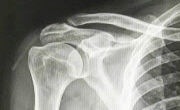목적: 당일 수술 환경에서 어깨 관절경 수술의 우리나라 현 의료 상태를 파악하고, 당일 수술로 시행하는 어깨 관절경 수술의 실행가능성 및 효과를 평가하고자 한다. 대상 및 방법: 2022년 6...
http://chineseinput.net/에서 pinyin(병음)방식으로 중국어를 변환할 수 있습니다.
변환된 중국어를 복사하여 사용하시면 됩니다.
- 中文 을 입력하시려면 zhongwen을 입력하시고 space를누르시면됩니다.
- 北京 을 입력하시려면 beijing을 입력하시고 space를 누르시면 됩니다.

어깨 관절경 수술: 당일 수술이 가능한가? -단일 기관 연구- = Arthroscopic Shoulder Surgery: Is Day Surgery Possible? -A Single Institution Analysis-
한글로보기https://www.riss.kr/link?id=A109621637
- 저자
- 발행기관
- 학술지명
- 권호사항
-
발행연도
2025
-
작성언어
Korean
- 주제어
-
등재정보
KCI등재
-
자료형태
학술저널
- 발행기관 URL
-
수록면
46-55(10쪽)
- DOI식별코드
- 제공처
- 소장기관
-
0
상세조회 -
0
다운로드
부가정보
국문 초록 (Abstract)
대상 및 방법: 2022년 6월부터 2023년 3월까지 어깨 관절경 수술을 받은 환자 308명을 대상으로 후향적 분석을 시행하였다. 나이, 성별, 사각근간 신경 차단술(interscalene nerve block, ISNB) 시행 유무, 그리고 회전근 개 파열 크기에 따라 1:2 성향 점수 매칭 시행 후, 당일 수술을 시행한 회전근 개 파열 환자군 59명, 입원하여 수술을 시행한 회전근 개 파열 환자군 118명을 분석하였다. 당일 수술의 적응증은 미국마취학회의 신체상태분류법(American Society of Anesthesiologists physical status classification) 1, 2급 환자들을 대상으로 하였으며, 환자의 사회적, 내/외과적 요인을 고려하였다. 수술 후 배뇨 곤란과 관련된 합병증을 예방하기 위해 수술 전에 국제 전립선 증상 점수(International Prostate Symptom Score, IPSS)를 사용하여 환자를 분류하고, IPSS가 7점 이상인 고위험 환자에게는 예방적인 약물을 처방하였다. 모든 수술 환자에게 사각근간 신경 차단술 및 사각근간신경 차단술 자가 통증 조절법(ISNB patient-controlled analgesia system)이 적용되었고, 당일 수술 후 집으로 귀가하는 환자는퇴원 직전에 0.375% ropivacaine 5 cc와 5 cc의 생리식염수를 추가 주사 시행 후 퇴원하였다. 수술 당일, 수술 1, 2, 14일 후의 통증 평가 및 세척된 생리식염수의 총량, 수술 시간, 합병증을 비교하였다.
결과: 수술 당일 시각 통증 지수(visual analogue scale for pain)는 당일 수술 환자군(4.1±1.5)과 입원 수술 환자군(4.1±1.1)간에 유의한 차이가 없었다(p=0.35). 마찬가지로, 수술 1, 2, 14일 후 측정한 시각 통증 지수에서 두 군 간의 통계적으로 유의한 차이는 없었다(all p>0.05). 수술과 관련된 요소인 세척된 생리식염수의 총량 및 수술 시간 모두 두 군 간의 차이가 없었으며, 수술 후합병증도 두 군 간에 유의한 차이가 없었다(all p>0.05).
결론: 수술 전 환자에 대한 신중한 평가 후에, 심각한 기저 질환이 없는 건강한 환자에게는 관절경적 회전근 개 봉합술을 입원 없이당일 수술로 안전하게 시행할 수 있다.
목적: 당일 수술 환경에서 어깨 관절경 수술의 우리나라 현 의료 상태를 파악하고, 당일 수술로 시행하는 어깨 관절경 수술의 실행가능성 및 효과를 평가하고자 한다.
대상 및 방법: 2022년 6월부터 2023년 3월까지 어깨 관절경 수술을 받은 환자 308명을 대상으로 후향적 분석을 시행하였다. 나이, 성별, 사각근간 신경 차단술(interscalene nerve block, ISNB) 시행 유무, 그리고 회전근 개 파열 크기에 따라 1:2 성향 점수 매칭 시행 후, 당일 수술을 시행한 회전근 개 파열 환자군 59명, 입원하여 수술을 시행한 회전근 개 파열 환자군 118명을 분석하였다. 당일 수술의 적응증은 미국마취학회의 신체상태분류법(American Society of Anesthesiologists physical status classification) 1, 2급 환자들을 대상으로 하였으며, 환자의 사회적, 내/외과적 요인을 고려하였다. 수술 후 배뇨 곤란과 관련된 합병증을 예방하기 위해 수술 전에 국제 전립선 증상 점수(International Prostate Symptom Score, IPSS)를 사용하여 환자를 분류하고, IPSS가 7점 이상인 고위험 환자에게는 예방적인 약물을 처방하였다. 모든 수술 환자에게 사각근간 신경 차단술 및 사각근간신경 차단술 자가 통증 조절법(ISNB patient-controlled analgesia system)이 적용되었고, 당일 수술 후 집으로 귀가하는 환자는퇴원 직전에 0.375% ropivacaine 5 cc와 5 cc의 생리식염수를 추가 주사 시행 후 퇴원하였다. 수술 당일, 수술 1, 2, 14일 후의 통증 평가 및 세척된 생리식염수의 총량, 수술 시간, 합병증을 비교하였다.
결과: 수술 당일 시각 통증 지수(visual analogue scale for pain)는 당일 수술 환자군(4.1±1.5)과 입원 수술 환자군(4.1±1.1)간에 유의한 차이가 없었다(p=0.35). 마찬가지로, 수술 1, 2, 14일 후 측정한 시각 통증 지수에서 두 군 간의 통계적으로 유의한 차이는 없었다(all p>0.05). 수술과 관련된 요소인 세척된 생리식염수의 총량 및 수술 시간 모두 두 군 간의 차이가 없었으며, 수술 후합병증도 두 군 간에 유의한 차이가 없었다(all p>0.05).
결론: 수술 전 환자에 대한 신중한 평가 후에, 심각한 기저 질환이 없는 건강한 환자에게는 관절경적 회전근 개 봉합술을 입원 없이당일 수술로 안전하게 시행할 수 있다.
다국어 초록 (Multilingual Abstract)
Materials and Methods: Three hundred and eight arthroscopic shoulder surgeries performed between June 2022 and March 2023 were reviewed retrospectively. Propensity score matching (1-to-2) was performed between the day surgery group and the inpatient group according to sex, age, tear size, and interscalene nerve block (ISNB). Finally, 59 patients in the day surgery group and 118 patients in the inpatient group were matched. The indications of the day surgery were pre-determined according to the American Society of Anesthesiologists classification I or II, and the patient's social, medical, and surgical factors were thoroughly analyzed to define the target group of the day surgery. Complications related to voiding difficulty were prevented by classifying the patients using the International Prostate Symptom Score (IPSS) before surgery, and preventive medications were prescribed in the higher-risk patients with an IPSS of more than 7. To reduce postoperative pain, ISNB and patient-controlled analgesia (PCA) were applied to all patients during the study period, while day surgery patients received an additional bolus injection (5 cc of 0.375% ropivacaine+5 cc of normal saline) before discharge instead of continuous ISNB PCA. This study compared the postoperative pain assessments at discharge and on postoperative days 1, 2, and 14, as well as the total volume of saline irrigation, surgical time, and complications between the day surgery and inpatient groups.
Results: The visual analogue scale for pain (pVAS) at the time of surgery were comparable in the day surgery group (4.1±1.5) and inpatient surgery group (4.1±1.1), with no significant difference between them (p=0.35). Similarly, the postoperative pVAS at 1, 2, and 14 days postoperatively was similar in the two groups (all p>0.05). The surgical-related factors, such as the total volume of saline irrigation and surgical time, were similar in the two groups. Furthermore, there was no significant difference in postoperative complications between the two groups (all p>0.05).
Conclusion: These results show that arthroscopic shoulder surgery in ambulatory settings is a safe alternative to inpatient surgery.
Purpose: This study examined the status of arthroscopic shoulder surgery in ambulatory settings by analyzing a single institutional database. Materials and Methods: Three hundred and eight arthroscopic shoulder surgeries performed between June 2022 an...
Purpose: This study examined the status of arthroscopic shoulder surgery in ambulatory settings by analyzing a single institutional database.
Materials and Methods: Three hundred and eight arthroscopic shoulder surgeries performed between June 2022 and March 2023 were reviewed retrospectively. Propensity score matching (1-to-2) was performed between the day surgery group and the inpatient group according to sex, age, tear size, and interscalene nerve block (ISNB). Finally, 59 patients in the day surgery group and 118 patients in the inpatient group were matched. The indications of the day surgery were pre-determined according to the American Society of Anesthesiologists classification I or II, and the patient's social, medical, and surgical factors were thoroughly analyzed to define the target group of the day surgery. Complications related to voiding difficulty were prevented by classifying the patients using the International Prostate Symptom Score (IPSS) before surgery, and preventive medications were prescribed in the higher-risk patients with an IPSS of more than 7. To reduce postoperative pain, ISNB and patient-controlled analgesia (PCA) were applied to all patients during the study period, while day surgery patients received an additional bolus injection (5 cc of 0.375% ropivacaine+5 cc of normal saline) before discharge instead of continuous ISNB PCA. This study compared the postoperative pain assessments at discharge and on postoperative days 1, 2, and 14, as well as the total volume of saline irrigation, surgical time, and complications between the day surgery and inpatient groups.
Results: The visual analogue scale for pain (pVAS) at the time of surgery were comparable in the day surgery group (4.1±1.5) and inpatient surgery group (4.1±1.1), with no significant difference between them (p=0.35). Similarly, the postoperative pVAS at 1, 2, and 14 days postoperatively was similar in the two groups (all p>0.05). The surgical-related factors, such as the total volume of saline irrigation and surgical time, were similar in the two groups. Furthermore, there was no significant difference in postoperative complications between the two groups (all p>0.05).
Conclusion: These results show that arthroscopic shoulder surgery in ambulatory settings is a safe alternative to inpatient surgery.
동일학술지(권/호) 다른 논문
-
- 대한정형외과학회
- 변준우
- 2025
- KCI등재
-
슬관절의 치유되지 않은 전외측인대와 전방십자인대 재건술 후 남아있는 Pivot-Shift의 연관성
- 대한정형외과학회
- 최남홍
- 2025
- KCI등재
-
동일 환자에서 시행한 단계적 직접 전방 도달법과 측방 도달법을 통한 양측 인공 고관절 전치환술의 환자가 보고하는 치료 결과
- 대한정형외과학회
- 최병열
- 2025
- KCI등재
-
전산화단층촬영을 이용한 대퇴골 전자간 골절 전방부위의 형태학적 분석
- 대한정형외과학회
- 장재석
- 2025
- KCI등재




 DBpia
DBpia




